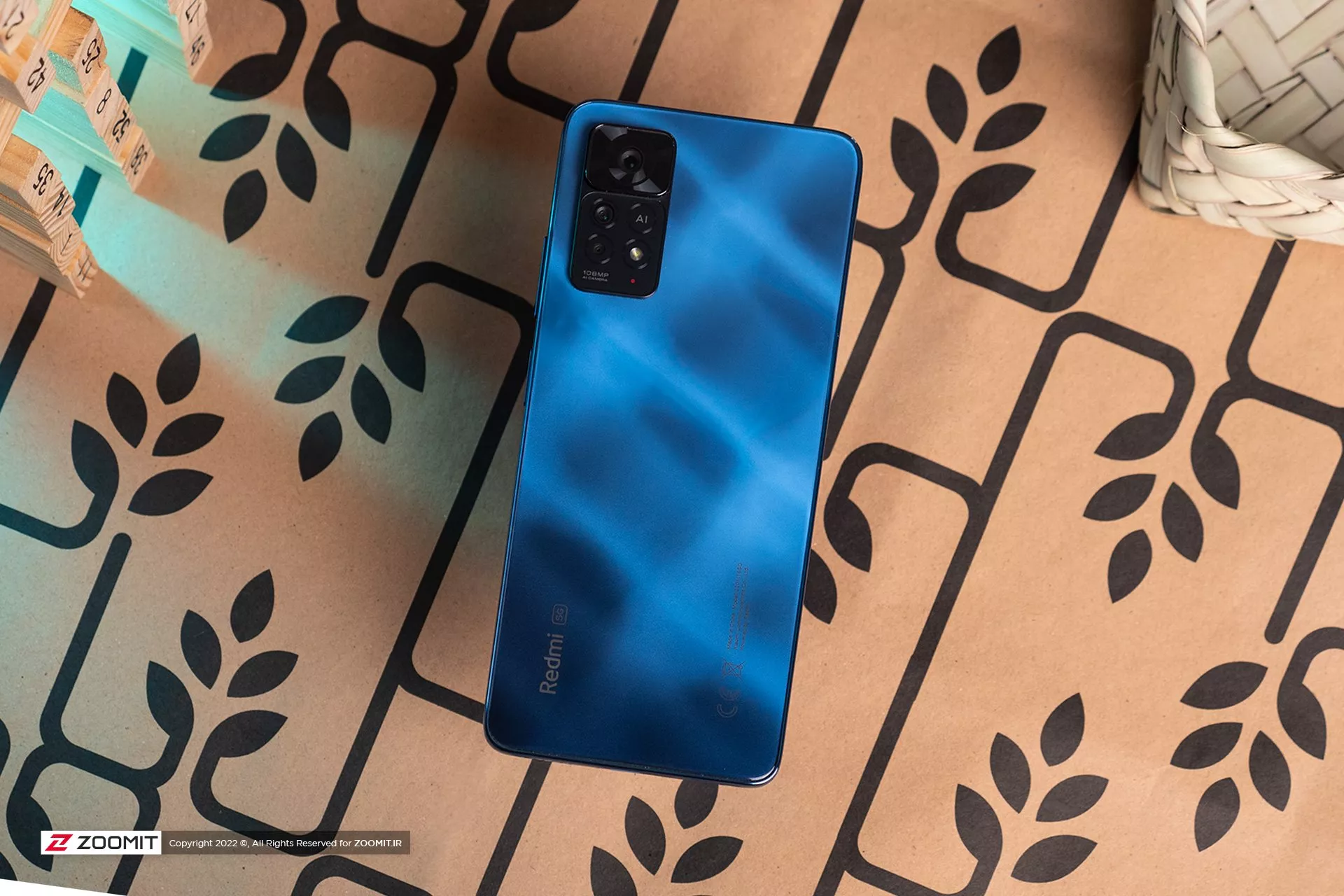Review of Xiaomi Redmi Note 11 Pro 5G
The Redmi Note 11 Pro 5G Does Not Experience A Significant Improvement Compared To The Previous Generation And Has Tough Competitors In Areas Such As Performance And Cameras.
Redmi Note 11 Pro 5G, Redmi Note 10 Pro, Redmi Note 9 Pro, and especially Redmi Note 8 Pro, which is still one of the three most popular phones in products with millions of views; If we take a look at the previous generations of the Redmi Note family, we will see that the Redmi Note 11 Pro has a long way to go to reach the mission and attract the attention of Iranian users; Users who are generally in financial straits are willing to upgrade their smartphones with difficulty and overcoming many challenges.
In addition to the successful performance of previous generations, the Redmi Note 11 Pro also faces tough competitors from its Xiaomi product family and companies such as Samsung.
The Redmi Note 11 Pro is available in international markets in both LTE and 5G versions, with most of their differences being due to their chips. We have the Redmi Note 11 Pro 5G available for review, and we want to test Xiaomi’s new midrange by conducting several tests, so stay tuned for the Redmi Note 11 Pro 5G.
Video review of Redmi Note 11 Pro
Design and build quality of Redmi Note 11 Pro
Just like the previous generation, we are on the side of a 6.67-inch smartphone; Of course, the Redmi Note 11 Pro 5G is 0.2 mm taller, 0.4 mm wider, and 9 grams heavier than the previous generation; on the other hand, the curvature of the frame and back panel has been reduced, along with the weight of 202 grams. It is possible that the Redmi Note 11 Pro has not sat well on the Redmi Note 10 Pro, and its continuous and prolonged use is not a pleasant experience; Instead, the phone has a solid tablet structure.

The back and front panel of the Redmi Note 11 Pro are made of Gorilla Glass 5, and its frame is plastic; The use of glass design along with the relatively high build quality of the phone makes the Redmi Note 11 Pro a better feeling to the user compared to most market intermediaries. The phone is available in matte gray, white or glossy blue. The gradient blue color of the phone reflects a range of dark to light blue shades and, fortunately, does not show many fingerprints and stains.

Although Xiaomi’s new midrange seems to have four cameras, it uses three cameras: wide, ultraviolet, and macro. On the rear view of the Redmi Note 11 Pro, the black protrusion of the camera appears thicker than before; Because it severely causes the phone to slip on flat surfaces, and a lot of dust accumulates around it. We will talk more about the Redmi Note 11 Pro triple module in the camera section.

While the Redmi Note 11 Pro’s OLED panel allows an optical fingerprint sensor below the screen, Xiaomi engineers have gone for a cheaper, more expensive capacitor option and inserted it into the power switch on the phone’s right edge. The Redmi Note 11 Pro fingerprint sensor has a fast and reliable operation.
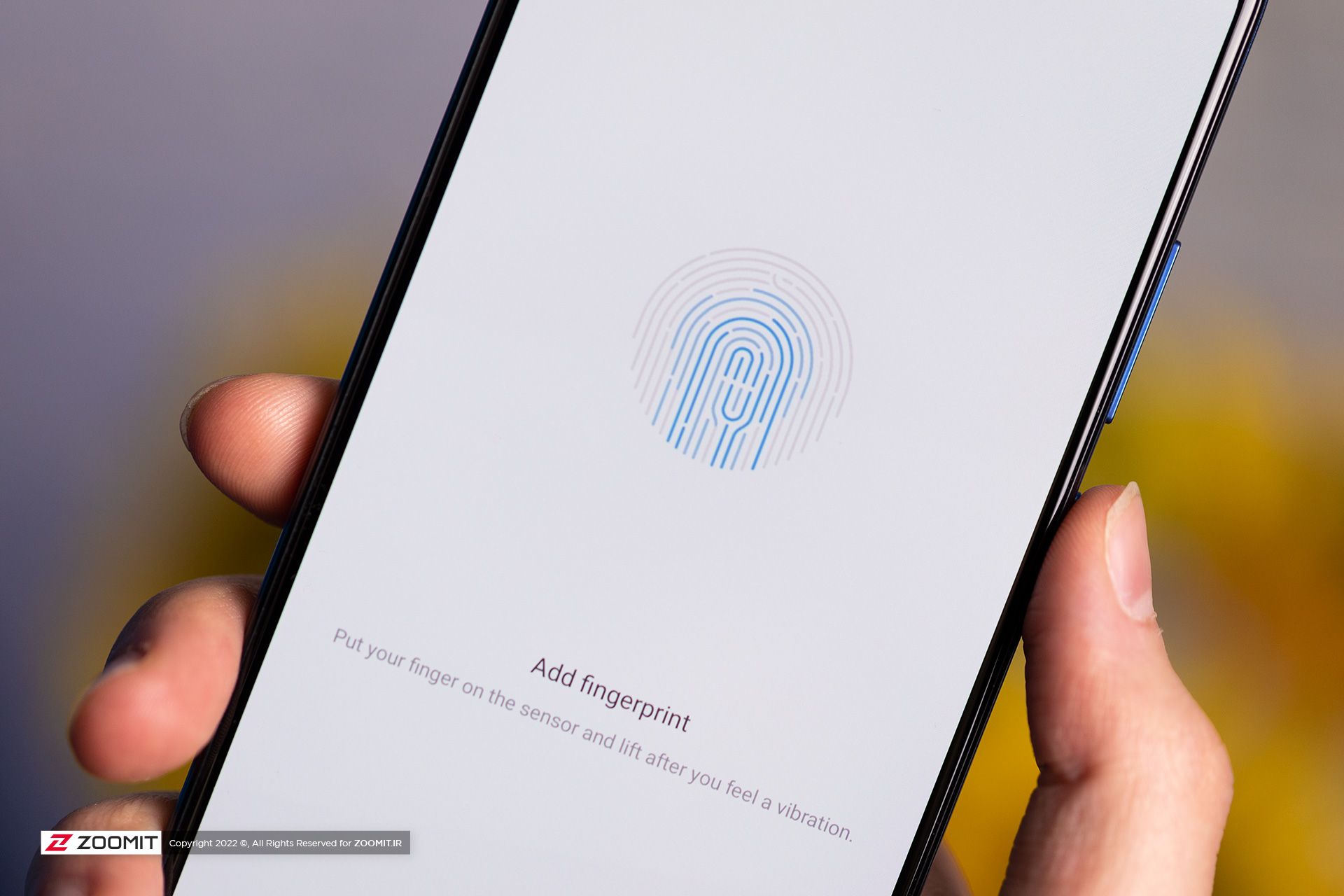
The Redmi Note 11 Pro has little to say about water and dust resistance to products like the Galaxy A52; Because IP67 certified intermediates can withstand water pressure at a depth of one meter; But Xiaomi’s new phone, just like the previous generation, is IP53 certified for short-term spraying of water droplets.
Redmi Note 11 Pro display and speaker
The 6.67-inch screen of the Redmi Note 11 Pro uses an OLED panel with a resolution of 2400 x 1080 pixels, a pixel density of 395 pixels per inch, a 20: 9 aspect ratio, and a refresh rate of 120 Hz. FHD + resolution is high enough; Because by looking at the phone from a close distance, you will not be able to separate the pixels. The device’s screen is also protected by Gorilla Glass 5 bed cover.

The refresh rate is set to 60 Hz by default, So to soften the UI animations, you have to manually change the refresh rate from the display settings to 120Hz. Note that the refresh rate is constant in both cases; Of course, the phone switches to 60 Hz for apps that do not support 120 Hz.
Xiaomi announces maximum brightness of Redmi Note 11 Pro display in both manual and automatic modes, 700 and 1200 nits; But in our studies, we obtained the numbers 637.5 and 1048.5 nits, respectively; Thus, the readability of the following phone screen is satisfactory; But it is not great; Because under the direct sunlight you will have a little challenge.
| Redmi Note 11 Pro 5G display performance against competitors | ||||||||||
|---|---|---|---|---|---|---|---|---|---|---|
| Product ام Parameters | Minimum brightness | Maximum manual brightness | Maximum automatic brightness | Native contrast ratio | Average color error | |||||
| White | Black | White | Black | White | Default mode | The most accurate mode | ||||
| Redmi Note 11 Pro 5G | 2.83 | ۰ | 637.5 | ۰ | 1048.5 | ∞ | 3.9 | 1.1 (Standard) | ||
| Redmi Note 10 Pro | 3.05 | ۰ | 670 | ۰ | 1111 | ∞ | 3.7 | 1.4 (Standard) | ||
| Galaxy A52 | 2. 26 | ۰ | 587 | ۰ | 1230 | ∞ | 5.3 | 3.2 (Natural) | ||
| Xiaomi 11 Lite 5G NE | 2.6 | ۰ | 669.5 | ۰ | 905 | ∞ | 3.7 | 1.2 (Original) | ||
| Poco F3 | 2. 35 | ۰ | 615 | ۰ | 1205 | ∞ | 3.1 | 1.2 (Original) | ||
| Galaxy A53 | 2.44 | ۰ | 640.5 | ۰ | 1290 | ∞ | 3.3 | 1.9 (Natural) | ||
| Galaxy A52s 5G | 2.3 | ۰ | 607.5 | ۰ | 1305 | ∞ | 4.8 | 3.1 (Natural) | ||
* All benchmarks mentioned in this table have been implemented.
Redmi Note 11 Pro has three color profiles, Vivid, Saturated, and Standard, in the display settings; The performance of the phone in the first two profiles was very close to each other; these profiles cover the vast color space of DCI P3 with vivid colors, satisfactory accuracy and a tendency to cool; But the Standard profile, on the other hand, covers the more limited sRGB space with excellent accuracy and close to neutral.
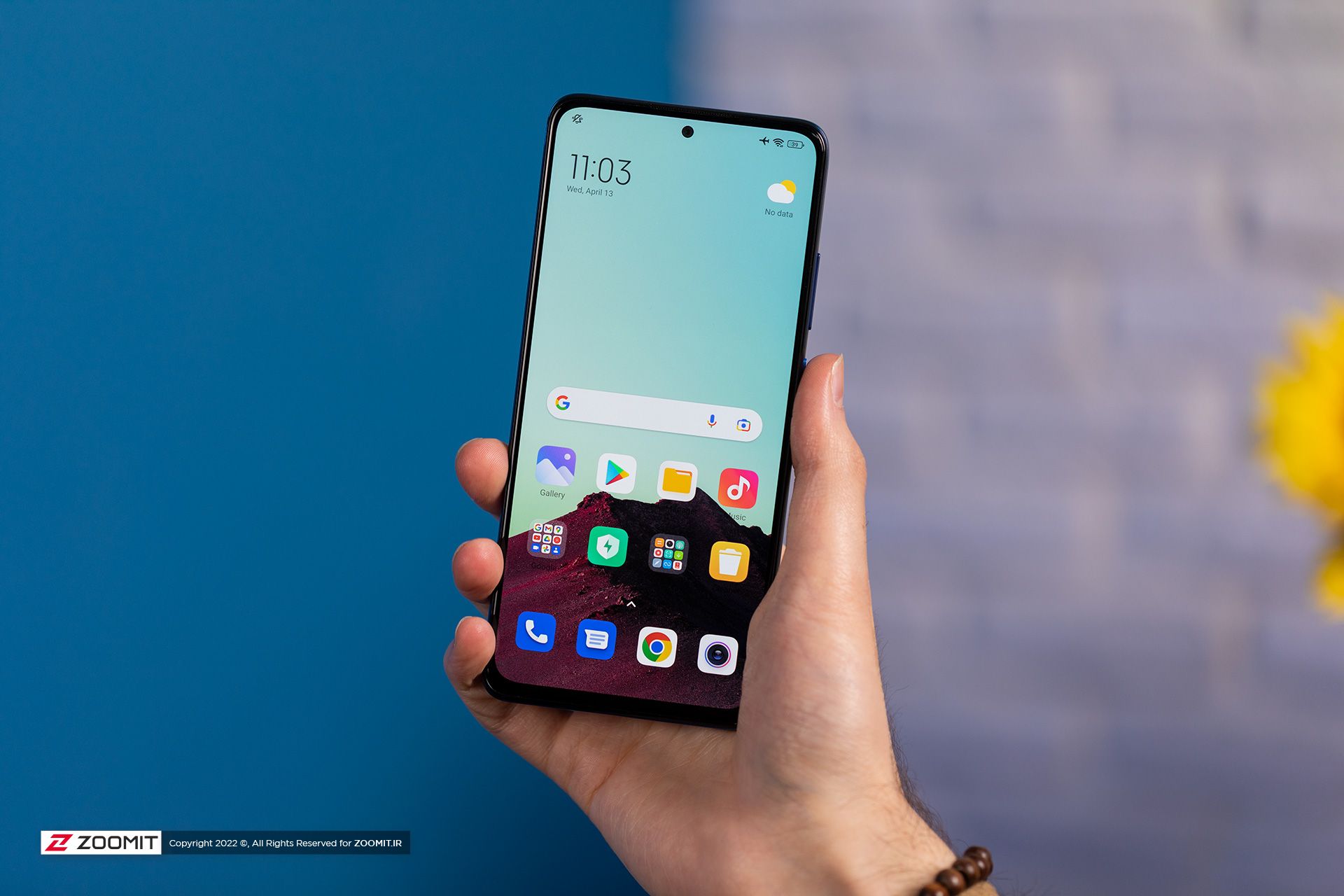
Like the previous generation, the new Redmi Note family uses mid-range stereo speakers located on the top edge of the display and the bottom edge of the device. The speakers have a balanced sound and perform similarly to the Galaxy A52 in the mid and low-frequency ranges, But their volume is slightly lower than that of the Koreans.
Redmi Note 11 Pro software and user interface
The Redmi Note 11 Pro comes with the latest version of Xiaomi’s proprietary UI by default with MIUI 13; Of course, now the phone uses Android 11 instead of Android 12, So there are no features like improved widgets, upgraded version of the file management application or Privacy Dashboard.
![]()
The Android 11-based MIUI 13 user interface on the Redmi Note 11 Pro is similar to MIUI 12. Still, Xiaomi says this user interface version focuses more on better management of hardware resources.
The Redmi Note 11 Pro showed more or less psychological performance; Of course, logs and sluggishness are occasionally observed during movement in different user interface parts.
Performance, gaming experience, and battery Redmi Note 11 Pro
One of the key differences between the 4G and 5G versions of the Redmi Note 11 Pro goes back to their chip; While the 4G model uses a 12-nanometer Helio G96 chip with relatively old Cortex A76 cores; The 5G is powered by a 6nm Snapdragon 695 5G chip with newer Cortex A78 cores and higher frequencies.
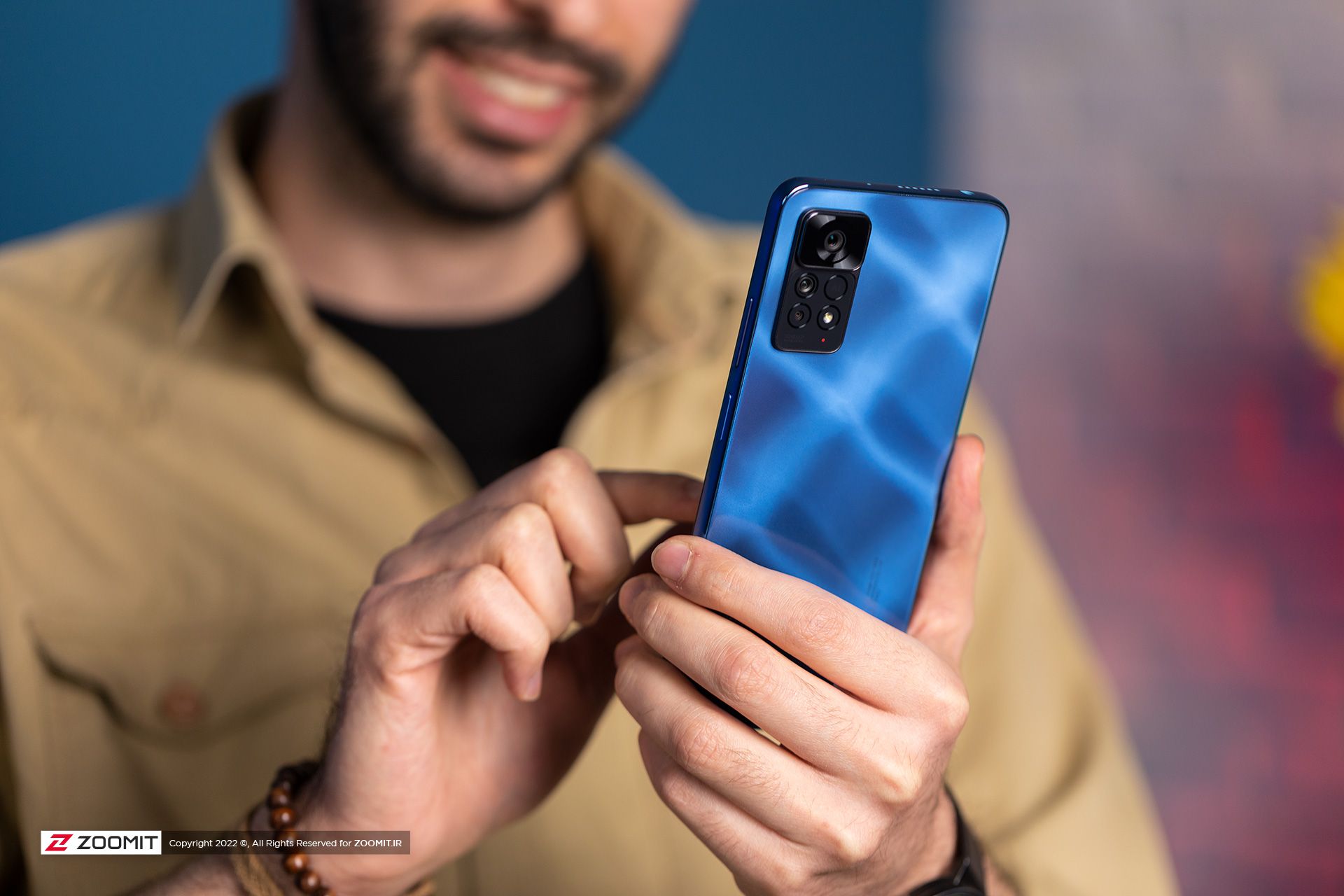
The Snapdragon 695 mid-range chip combines a 2.2 GHz dual-core Cortex-A78 chip with a 1.7 GHz Cortex-A55 core as the CPU, While the Adreno 619 module is also responsible for graphics processing. The Snapdragon 695 chip, thanks to the X51 integrated modem, also connects to 5G sub-6GHz networks with download and upload speeds of up to 2.5 Gbps and 900 Mbps.
Redmi Note 11 Pro 5G in four versions 6 | 64, 4 | 128, 6 | 128, and 8 | 128GB with LPDDR4X RAM, UFS 2.2 storage, and micro USB memory card support with a dual-port on the second SIM card. We had an 8GB version of this phone available for review; Of course, the Chinese have enabled a feature on the phone by default, which adds 3 GB of device storage memory to the RAM virtually.
| Redmi Note 11 Pro 5G storage memory performance against competitors | ||||
|---|---|---|---|---|
| Models / Performance | Sequential reading rate (MB / s) |
Sequential writing rate (MB / s) |
Random reading rate (MB / s) |
Random writing rate (MB / s) |
| Redmi Note 11 Pro 5G | 498.72 | 472. 45 | 193. 21 | 182. 28 |
| Redmi Note 10 Pro | 483. 56 | 269. 64 | 134.01 | 122. 38 |
| Poco F3 | 1384. 74 | 672.77 | 205.04 | 187.2 |
| Galaxy A53 | 514. 41 | 495.25 | 233.56 | 202. 48 |
| Galaxy A52s Model 5G | 913.8 | 480.01 | 147. 16 | 156.23 |
| Galaxy A52 Model 4G | 505.22 | 266.93 | 136. 98 | 130.83 |
| Xiaomi 11 Lite 5G NE | 909. 32 | 759. 17 | 202.9 | 200.2 |
* All benchmarks mentioned in this table have been implemented.
The Redmi Note 11 Pro 5G appeared in our reviews about 10% faster than the previous generation and almost on par with the Galaxy A52 5G; Xiaomi’s new intermediate in everyday applications also offers relatively smooth performance with few legs; But you should note that you have the same price tag as the Redmi Note 11 Pro 5G, you can also buy a smartphone like the Galaxy M52 with 40% faster performance and 70% more powerful graphics.
| Redmi Note 11 Pro 5G performance against competitors | |||||||||
|---|---|---|---|---|---|---|---|---|---|
| Name and performance of the benchmark/product | PCMark | Speedometer 2.0 | GeekBench 5 | GFXBench | |||||
| Overall performance | browser | GPU | CPU | Game simulator (frame rate) | |||||
| Volcano / Metal | Single Core Multi-Core |
Aztec Ruins Onscreen / 1440p |
Car Chase Onscreen / 1080p |
||||||
| OpenGL | Volcano | Metal | OpenGL | Metal | |||||
| Redmi Note 11 Pro 5G (120Hz) |
10636 | 19.45 | 1298 | 748 1915 |
12.7 _ |
12 8.2 |
– | 17 20 |
– |
| Redmi Note 10 Pro (120Hz) |
8942 | – | 1106 | 565 1762 |
11 7.4 |
11 7.7 |
– | 16 19 |
– |
| Galaxy A53 (120Hz) |
11650 | – | 2544 | 748 1915 |
۱۴ ۱۰ |
۱۴ ۱۰ |
– | 19 24 |
– |
| Galaxy A52s 5G (120Hz) |
12295 | 49.6 | 2410 | 771 2793 |
19 13 |
20 14 |
– | 28 33 |
– |
| Galaxy A52 5G (120Hz) |
9529 | 45.2 | – | 647 1919 |
10 7.2 |
11 7.6 |
– | 16 19 |
– |
| Galaxy A52 4G (90 Hz) |
8517 | 39.3 | – | 533 1560 |
10. 6.9 |
10 7.0 |
– | ۱۵ ۱۷ |
– |
| Xiaomi 11 Lite 5G NE (90 Hz) |
10166 | – | ۲۳۰۷ | 790 3,000 |
20 13 |
20 14 |
– | 29 33 |
– |
| Poco F3 | 10213 | 66.8 | – | 973 3281 |
32 20 |
33 21 |
– | 47 52 |
– |
* All benchmarks mentioned in this table have been implemented.
We reviewed two popular games, Call of Duty and Genshin Impact on the Redmi Note 11 Pro.
| Redmi Note 11 Pro 5G performance in running mobile games | ||
|---|---|---|
| Mobile game title | Graphic settings of the game | Frame rate |
| Genshin Impact | Lowest Graphics | 25 to 30 frames per second |
| Call of Duty Mobile | Very High Graphics | 55 to 60 frames per second |
* All benchmarks mentioned in this table have been implemented.
The GameBench software obtains the above table frame rates.
The Redmi Note 11 Pro 5G is equipped with a 5000 mAh battery; So at least in terms of battery capacity, it is no different from the previous generation; But perhaps using up-to-date 6-nanometer lithography will improve the phone’s charging. To evaluate the Redmi Note 11 Pro’s charge, we set the screen brightness and refresh rate to 200 nits and 120 Hz, respectively, and disconnected all wireless connections and the audio output.
| Redmi Note 11 Pro 5G battery performance against competitors | |||||
|---|---|---|---|---|---|
| Product ٫ Test | Display | Battery | Time required to charge | Video playback | PCMark |
| Dimensions and resolution | Million amp-hours | Minutes: hours | Minutes: hours | Minutes: hours | |
| Redmi Note 11 Pro 5G (120Hz) |
6.67 inches 2400 × 1080 pixels |
5000 | 0:47 | 15:33 | 11:19 |
| Redmi Note 10 Pro (120Hz) |
6.5 inches 2400 × 1080 pixels |
5020 | 1:21 | 23:48 | 9:59 |
| Galaxy A53 (120Hz) |
6.5 inches 2400 × 1080 pixels |
5000 | – | 18:27 | 12:13 |
| Galaxy A52s 5G (120Hz) |
6.5 inches 2400 × 1080 pixels |
4500 | 1:28 | 18:10 | 10:13 |
| Galaxy A52 5G (120Hz) |
6.5 inches 2400 × 1080 pixels |
4500 | – | 13:44 | 9:16 |
| Galaxy A52 4G (90 Hz) |
6.5 inches 2400 × 1080 pixels |
4500 | – | 15:17 | 11:52 |
| Xiaomi 11 Lite 5G NE (90 Hz) |
6.5 inches 2400 × 1080 pixels |
4250 | 1:00 p.m. | 25:00 | 11:00 |
| Poco F3 (120 Hz) |
6.67 inches 2400 × 1080 pixels |
4520 | 0:55 | 20:35 | 14:24 |
* All benchmarks mentioned in this table have been implemented.
Our research shows that the Redmi Note 11 Pro 5G lasts about 10 percent longer in everyday applications such as web browsing, social networking, text writing, and photo editing; In standard Zomit conditions, charging the device takes 11 hours and 19 minutes; On the other hand, in terms of film distribution, we reached a result of 15 hours and 33 minutes, which is on par with Korean competitors and weaker than the previous generation.
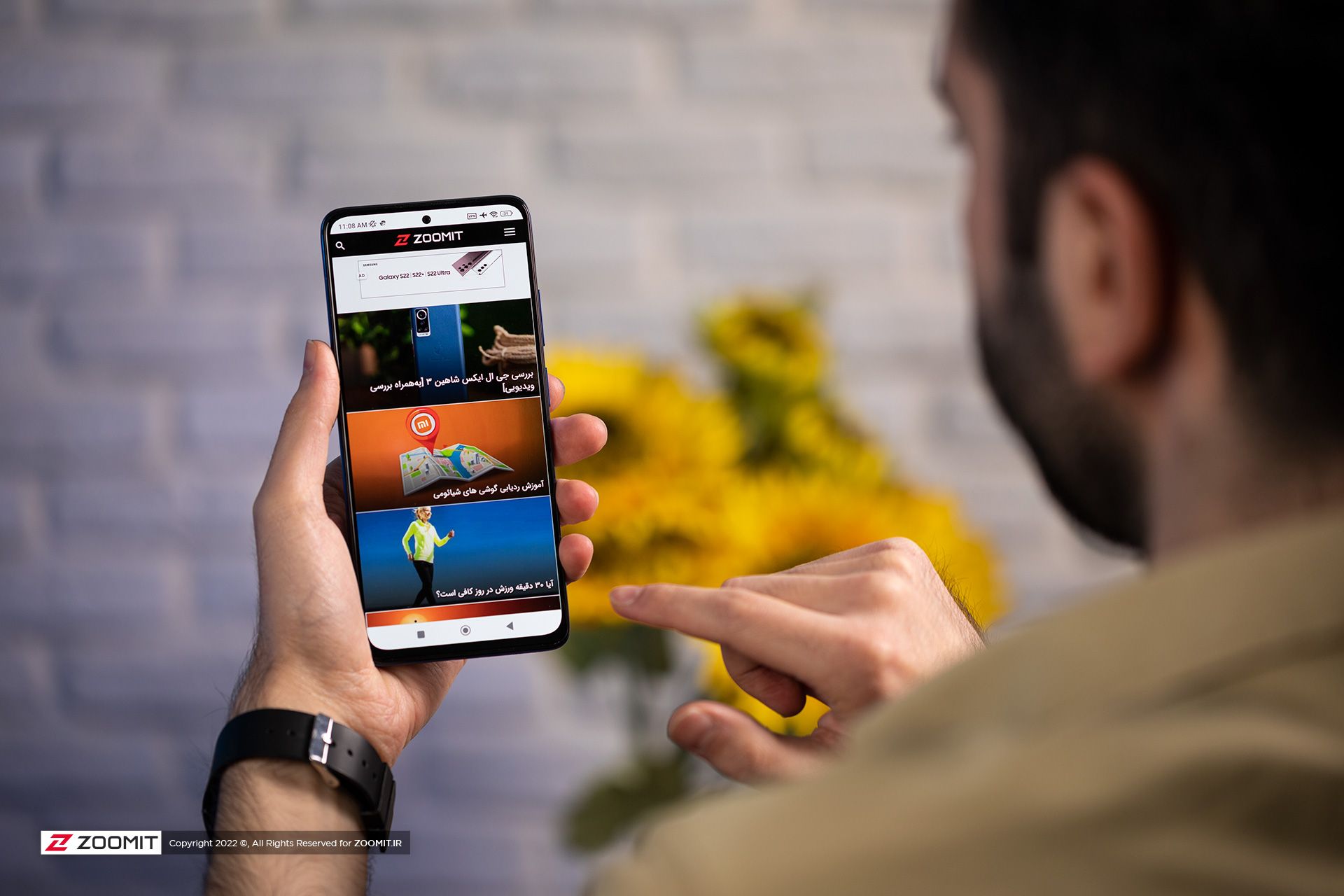
One of the Redmi Note 11 Pro’s strengths lies in its fast battery charge; While the Galaxy A53 sells without a charger and supports a maximum of 25-watt chargers, the Xiaomi Intermediate comes with a 67-watt fast charger that charges fully with the same charger in 47 minutes.
Redmi Note 11 Pro camera
Redmi Note 11 Pro 5G camera hardware is no different from Redmi Note 10 Pro; Of course, now there is no more depth meter module. Contrary to the Redmi Note 11 Pro’s significant bulging protrusion, the rear camera is triple and includes three comprehensive, ultraviolet, and macro modules. In the following, we will become more familiar with the details of each camera.
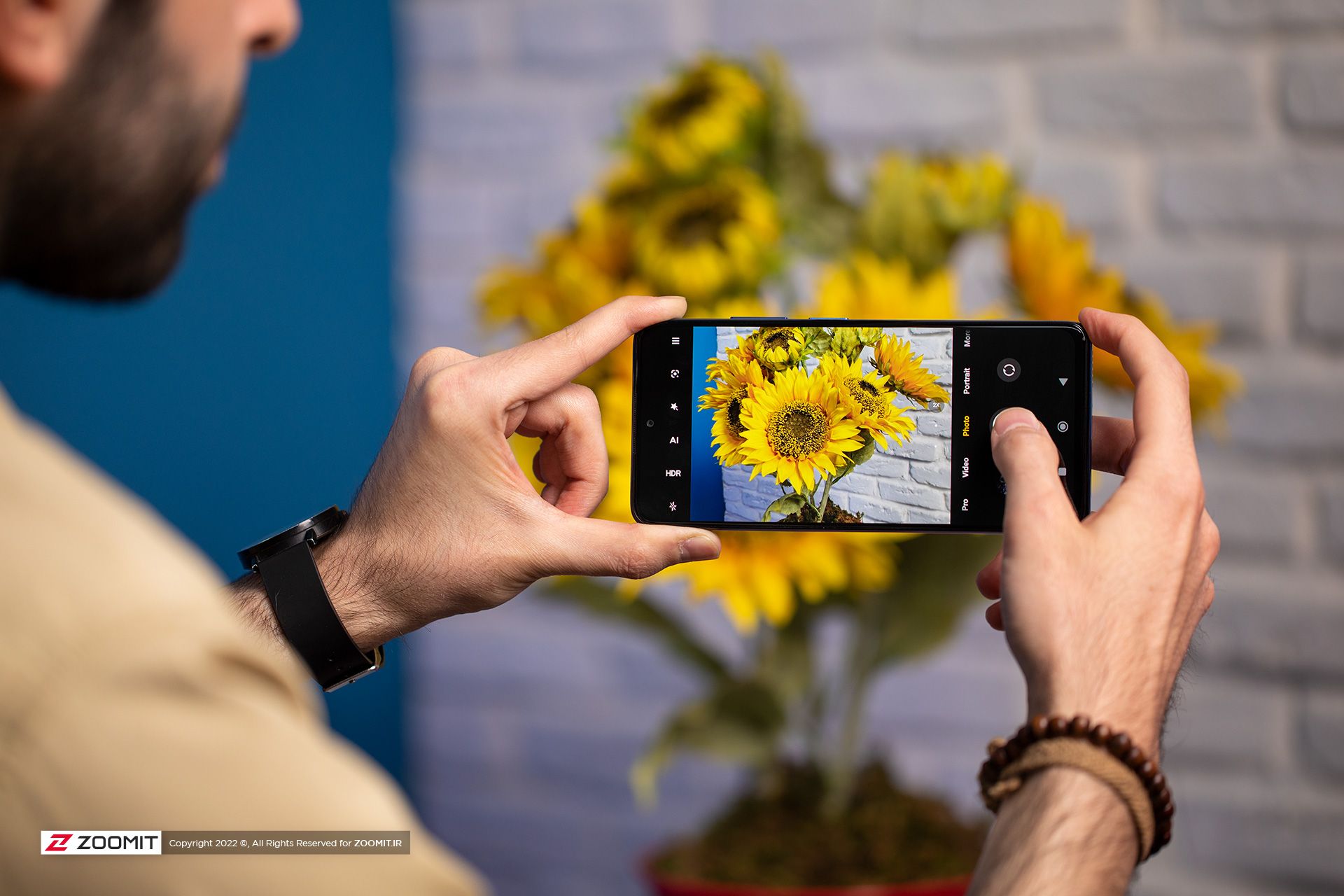
The central (wide) camera uses Samsung’s 108-megapixel 1 / 1.52-inch ISOCELL HM2 sensor with 0.7-micrometer pixels and Nona-Bayer color filter; Understandably, all nine adjacent pixels capture the same color, forming larger pixels with a side of 2.1 micrometers, transforming the final image into a 12-megapixel sample. The primary camera also uses phase-detection autofocus. The HM2 sensor is not the same as Samsung’s flagship phones and is 23% smaller. The sensor is located behind the 24mm f / 1.9 lens without optical image stabilization.
Like the previous generation, the Ultrawide camera uses an 8-megapixel, 1 / 4.0-inch Sony IMX355 sensor with 1.12-micrometer pixels and an f / 2.2 lens with a 118-degree field of view. The Redmi Note 11 Pro does not have autofocus, and the Night Mode feature of the phone is not supported.
The Note 11 Pro’s macro camera uses a 2-megapixel, 1 / 5.0-inch GalaxyCore GC02M1 sensor with 1.75-micron pixels and an f / 2.4 lens, unlike the previous generation, the Redmi Note 11 Pro does not support autofocus on the macro camera.
The selfie camera uses a 16-megapixel 1 / 3.06-inch OmniVision OV16A1Q sensor with 1.0-micrometer pixels, fixed focus, and f / 2.4 lens. The OV16A1Q sensor uses a Quad-Bayer color filter. It should typically capture images by combining all four adjacent pixels with a resolution of 4 megapixels, But the Redmi Note 11 Pro eventually stores photos at 16 megapixels.
Colors, details, and dynamic range of the Redmi Note 11 Pro
Looking at the window area in the photos below, you can see that the ultraviolet camera performs very poorly. The primary camera of the Redmi Note 11 Pro has a moderate performance in terms of dynamic range. The color of the Xbox S Series console also shows that the primary camera, in particular, has a strong tendency to warm up colors. The colors of neither camera are close to reality, But the colors of the ultraviolet camera are more saturated.
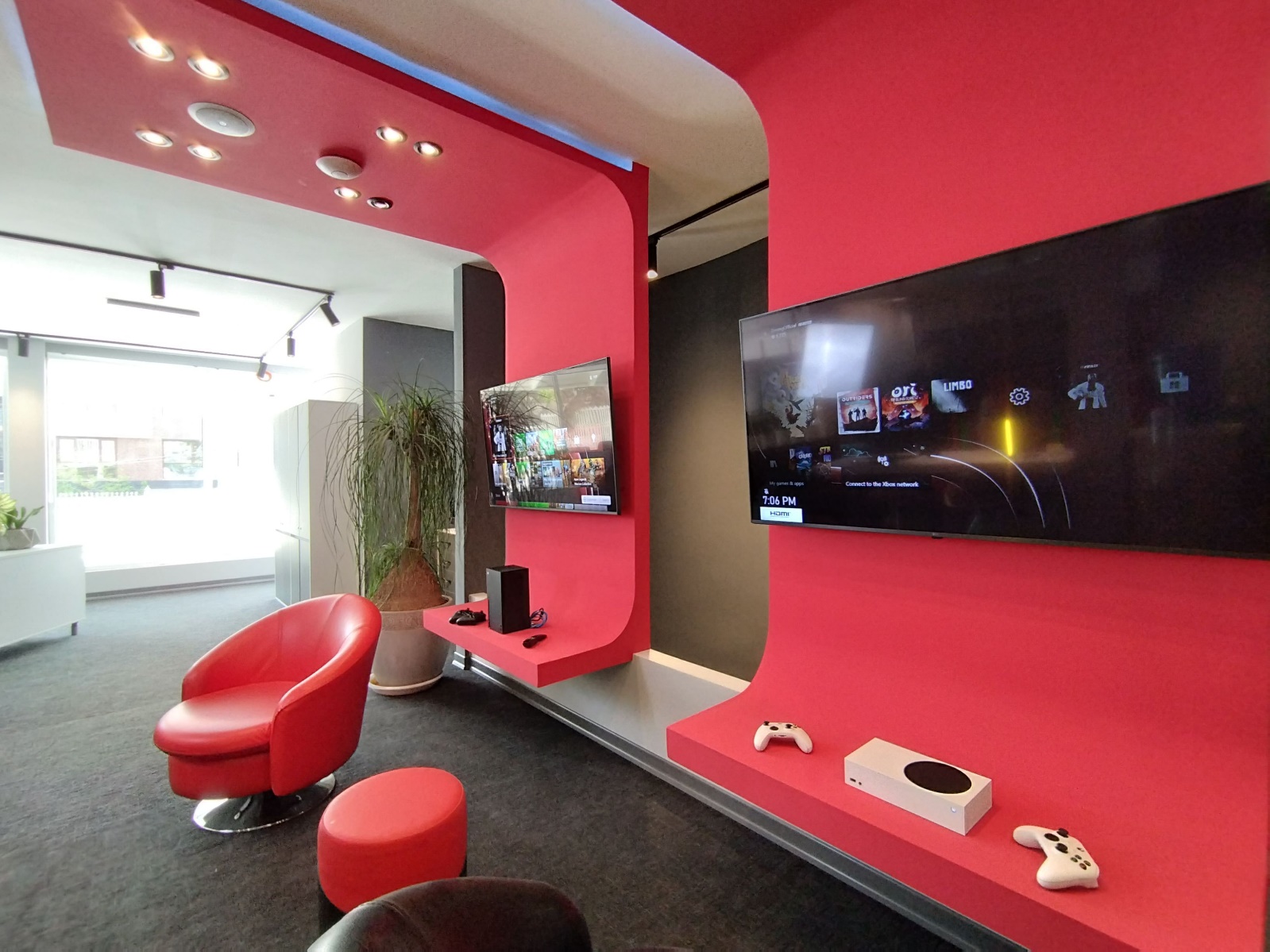
HDR Photo Ultraviolet Camera
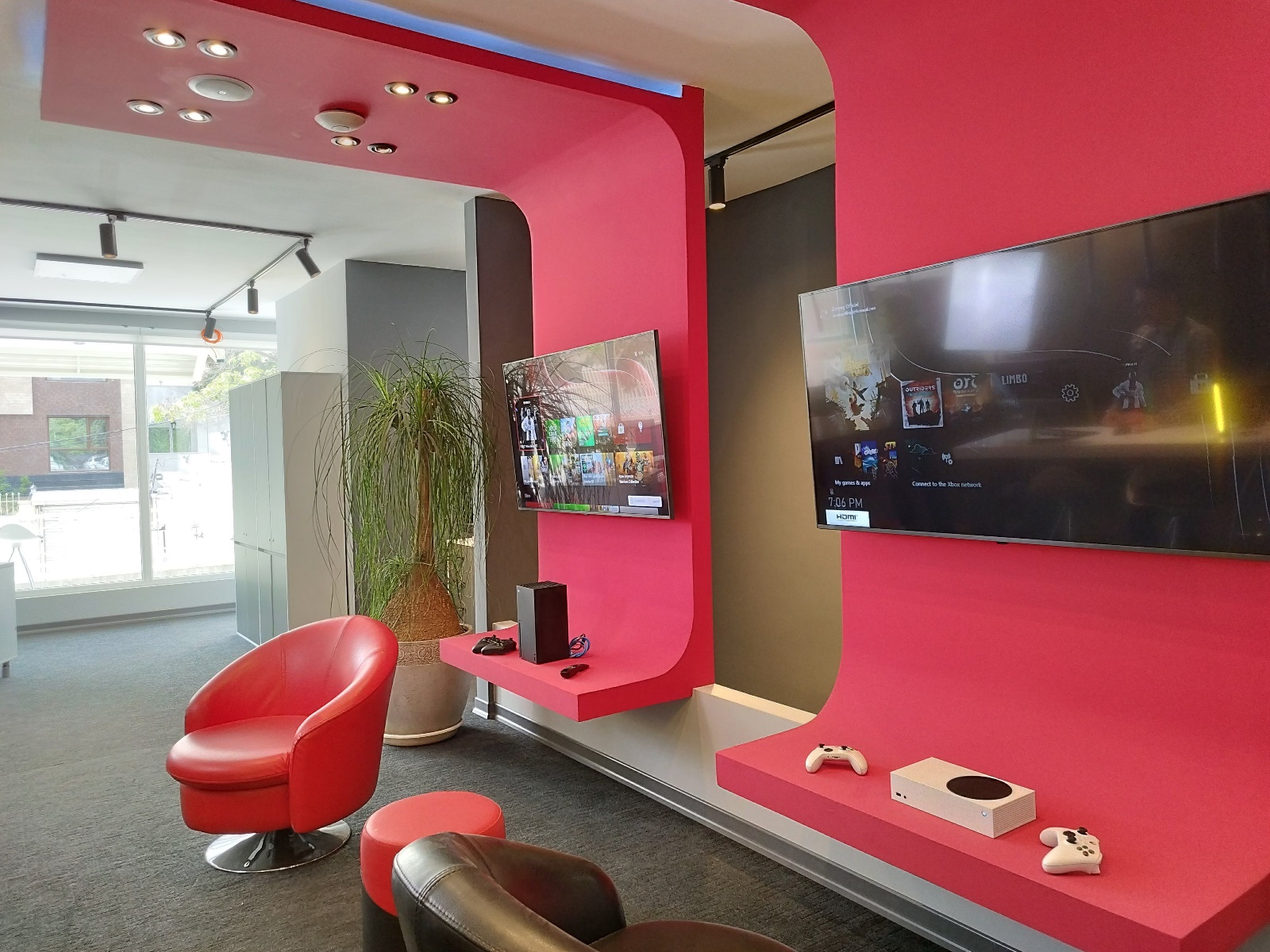
HDR Photo Wide Camera
Looking at the flat surfaces below, you can see that the details of the ultraviolet camera are smooth. The primary camera is better, But it is far from the best in the middle market. On the other hand, noise in the main camera photo is evident.
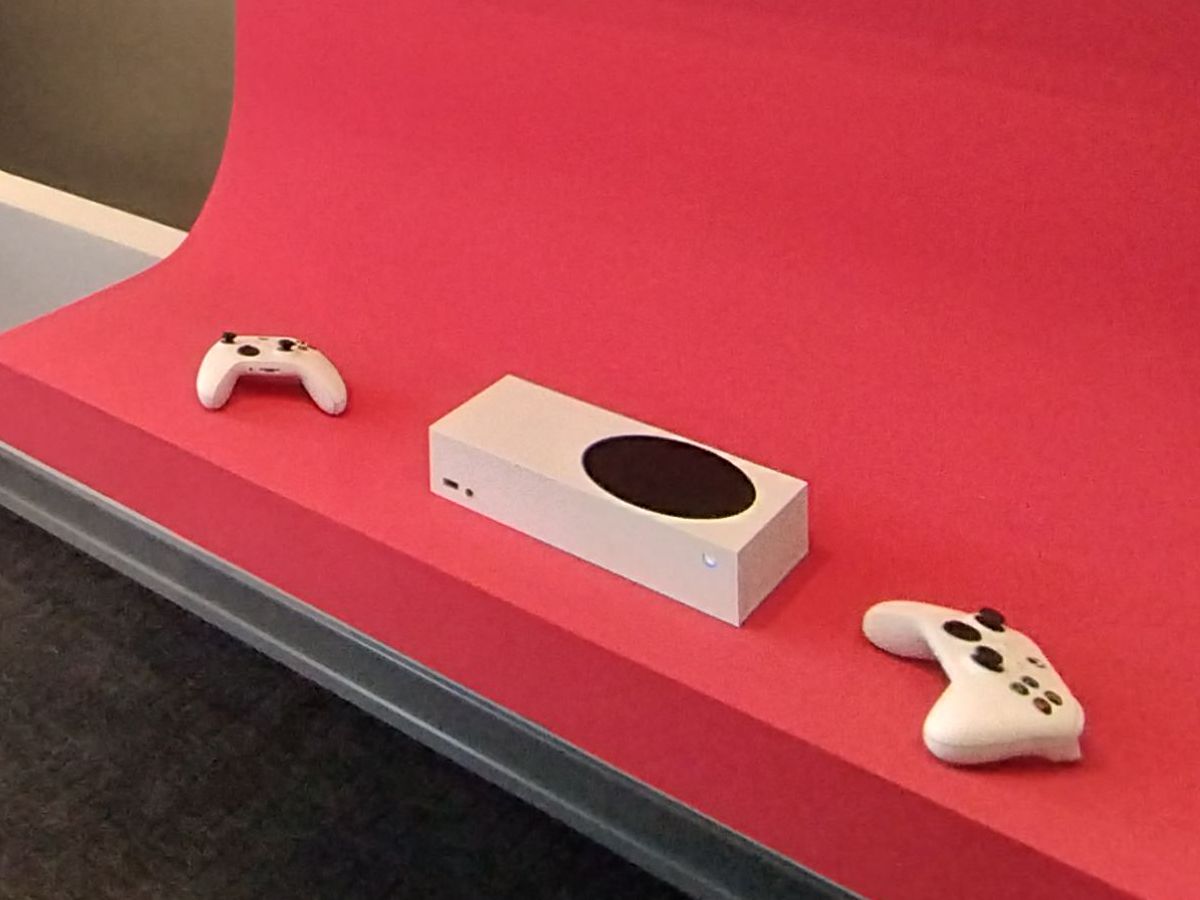
Ultraviolet Crop Crop
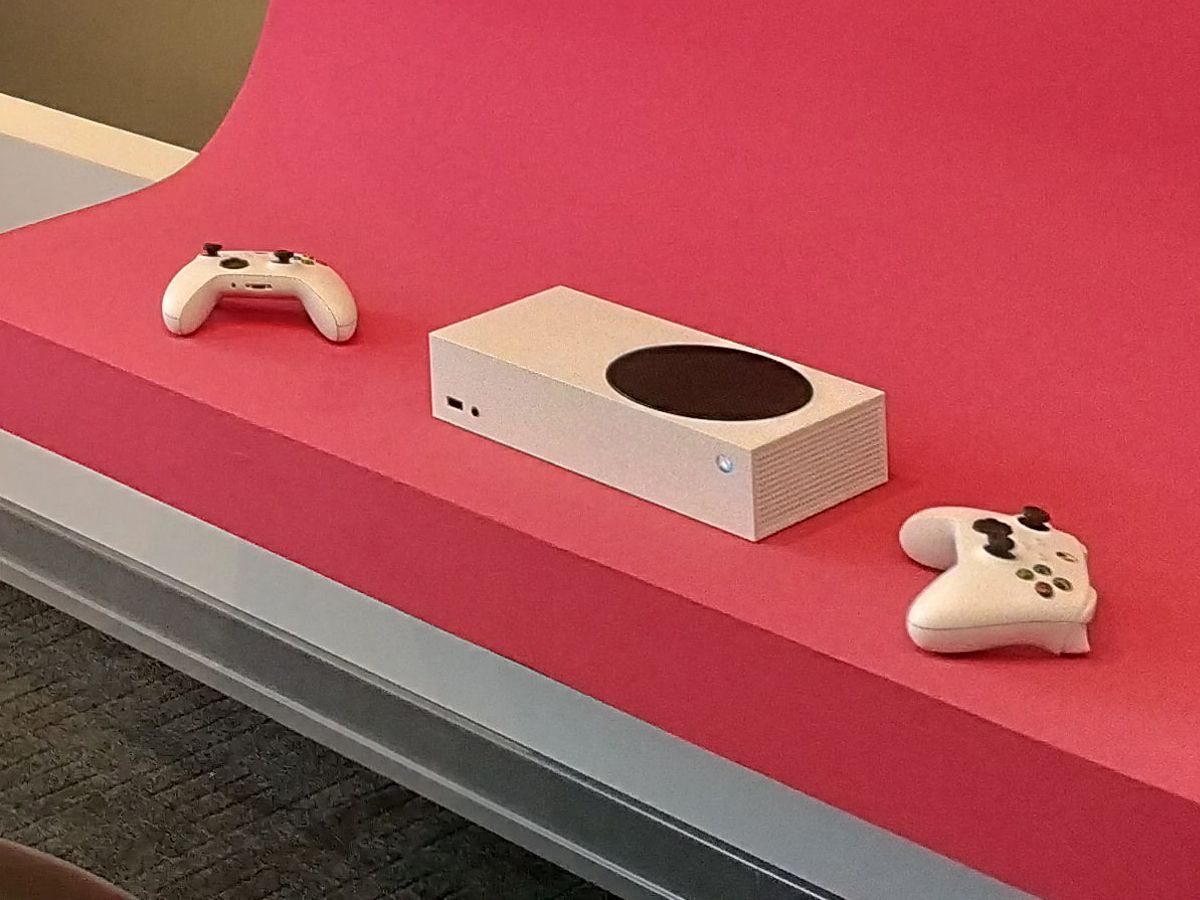
Crop the main camera
12 megapixels vs. 108 megapixels
The Redmi Note 11 Pro also allows the user to shoot at the 108-megapixel native resolution of the primary camera. As you can see in the pictures below, the 108-megapixel image has slightly more detail and higher noise; But looking at the tree branches, we can see that the dynamic range in the 108-megapixel mode is not as wide as the 12-megapixel mode. A bright halo on the border between the building and the sky indicates excessive software processing and access to 12-megapixel HDR images.
![]()
A slice of a 108-megapixel photo
![]()
A portion of a 12-megapixel photo in actual size
Redmi Note 11 Pro camera performance in the dark
The Redmi Note 11 Pro’s ultraviolet camera does not have access to Night mode, and Darkly, it captures dark images with little detail. The wide-angle camera acceptably takes pictures with a good point and a satisfactory noise level, and in Night mode, it captures photos brighter than reality.

Ultraviolet camera photo in the dark

Photo of the primary camera in the dark with Photo mode

Main camera photo in the dark with Night mode
Portrait and selfie photography with Redmi Note 11 Pro
The Redmi Note 11 Pro uses the primary camera for portrait photography. This economical phone offers excellent performance in separating the subject from the background and preserving the details of the face. Still, the implementation of the bokeh effect in its portrait photos is not very natural and gradual, and only all the parts of the background have disappeared in the same amount, regardless of their distance from the camera.

Portrait photo with the main camera, no bokeh effect

Portrait photo with primary camera and bokeh effect
The selfie camera is not at the level of the primary camera in terms of details, bokeh effect implementation, or dynamic range.

Selfie without bokeh effect

Selfie photo with bokeh effect
Macro photography with Redmi Note 11 Pro
If you have a lot of light in the environment and enough patience, you can take relatively good macro photos with the Redmi Note 11 Pro, although the level of detail in the 2-megapixel Redmi photos does not match the best on the market.


While the Redmi Note 10 Pro offers 4K video recording capability, the Redmi Note 11 Pro is capable of 1080p video recording at 30 frames per second at best due to the weakness of the Snapdragon 695 chip; Of course, macro video recording is limited to 720p resolution. The main camera videos with a resolution of about 20 Mbps appear satisfactory in detail, colors, and contrast. Still, ultraviolet camera videos are at a lower level.
Summary and comparison of Redmi Note 11 Pro with competitors
Leaving aside a 10% improvement in performance and charging along with 5G network support, the Redmi Note 11 Pro has almost nothing new to say compared to the previous generation; So as long as you are not fascinated by the not-so-dramatic changes in the look of the phone, migrating from the Redmi Note 10 Pro 4G to the Redmi Note 11, Pro 5G does not make much sense.
Suppose you will buy a smartphone now in the price range of 8 to 9 million Tomans. In that case, you should keep in mind that other devices such as the Galaxy M52 and Poco F3 offer much better and extraordinarily better performance than the Redmi Note 11 Pro 5G or a cheaper phone. Like the Galaxy A52, they can bring you a better photography experience.
The Redmi Note 11 Pro 5G does not offer the best camera or the fastest performance in its price range. It is not a product that can be provided to anyone, especially if we consider the limited purchasing power of the people of our country.
Positive points
- 120Hz OLED display with accurate colors
- Glass and well-made design
- Supplied with a 67-watt fast charger
- Outstanding charge
Cons
- A weaker chip than competitors and the previous generation
- Disappointing camera performance
- Eliminate 4K video recording capability
- Eliminate the macro camera autofocus feature










